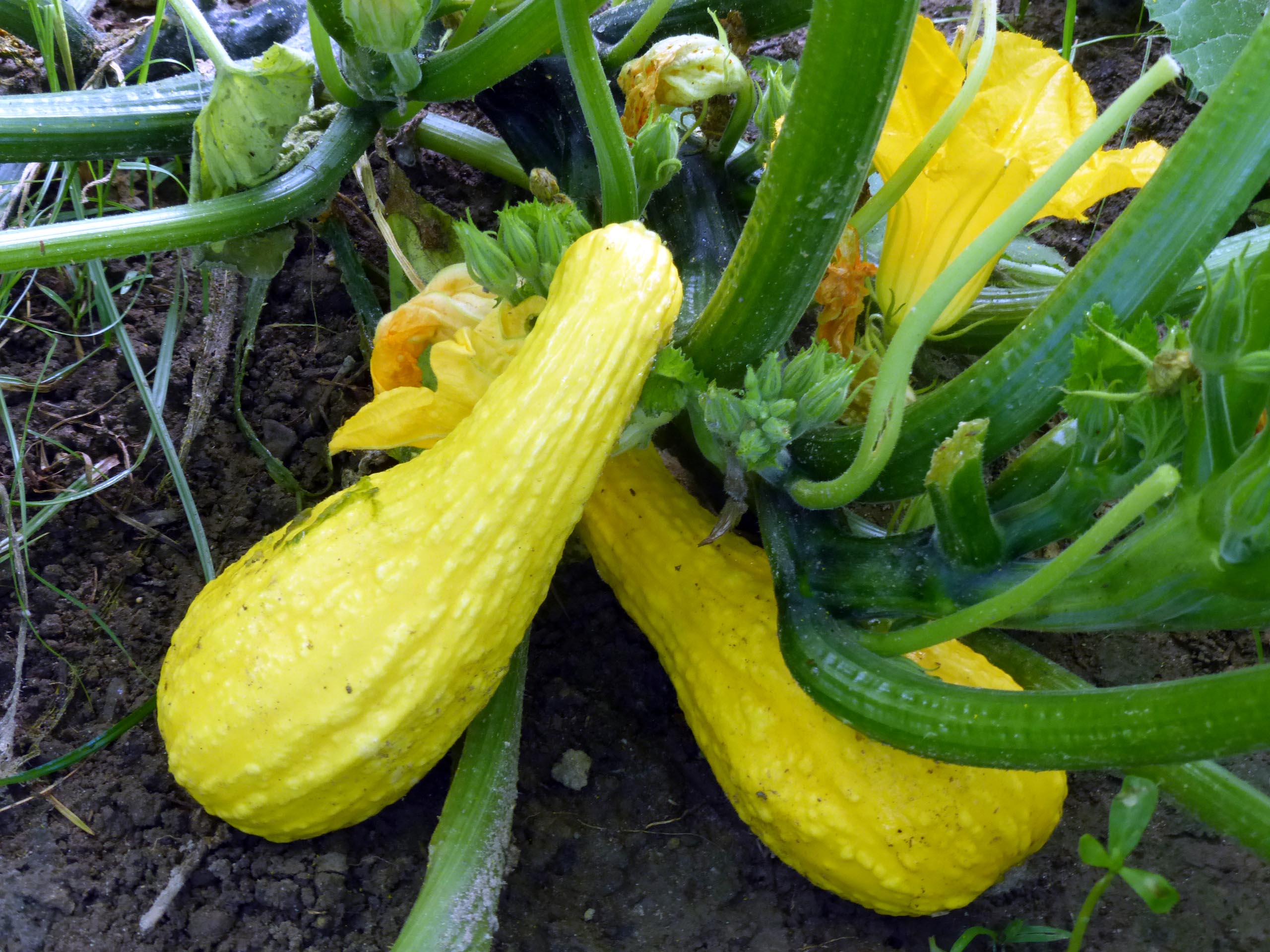Yellow Squash Beetle

Yellow squash beetle
Keep your gardens clean of all old cucurbit vines and crop or leaf debris. With winter hiding places removed, squash bugs rarely survive the cold, so it cuts down on cucurbit invasions the next season. Tilling the soil well after harvest also goes a long way toward eliminating these pests.
Are squash beetles harmful?
They suck the sap out of leaves with their piercing-sucking mouthparts. Their feeding causes yellow spots that eventually turn brown. The feeding also affects the flow of water and nutrients, and, when severe, can cause wilting. Unlike cucumber beetles, squash bugs do not carry diseases.
How do you get rid of squash lady beetles?
There are several types of plants that repel squash beetles because of their smells or their natural oils, including catnip, marigold, radish, petunias, and nasturtiums. These plants should provide an organic way to deter them from consuming their normal diet without the use of dangerous chemicals.
How do I get rid of squash beetle larvae?
The best and most eco-friendly way to kill squash bugs is by hand (or foot). Drop them immediately into a jar or similar container filled with soapy water. They cannot escape and will drown. You can scrape squash bug eggs from the underside of leaves and dispose of them or drop them into the same soapy water.
Can a squash plant recover from squash bugs?
Both adults and nymphs suck nutrients from leaves, causing wilting. Seedlings, newly transplanting plants, and flowering plants are the most vulnerable. Unless severely damaged, plants usually recover once the squash bug population declines.
Do marigolds repel squash beetles?
MARIGOLDS- Repel Mexican bean beetles, aphids, cabbage moths, potato bugs, squash bugs, nematodes (if dug into soil), and maggots.
Do coffee grounds keep squash bugs away?
Adding coffee grounds to boiled water will help to deter squash bugs; spray the cooled solution on vegetation or spread coffee grounds around plants to discourage squash bugs. Because of their high caffeine and diterpene content, fresh and unused coffee grounds are the most effective way to deter pests.
What kills squash bugs naturally?
Diatomaceous Earth (DE) DE is very sharp on a microscopic level and it dries out and kills many bugs that come into contact with it. Put DE directly on the eggs and around the stems of your plants to help keep squash bugs away.
How do farmers deal with squash bugs?
The best method for control is prevention through sanitation. Remove old cucurbit plants after harvest. Keep the garden free from rubbish and debris that can provide overwintering sites for squash bugs. At the end of the gardening season, compost all vegetation or thoroughly till it under.
What plants do squash beetles hate?
Companion planting is also worth a try, using repellent plants that deter the squash bug. They include catnip, tansy, radishes, nasturtiums, marigolds, bee balm and mint.
What does squash beetle damage look like?
Squash bug damage appears as little yellow lesions on leaves, stems and vines. Those spots will turn darker and grow in time. The edges of the leaves start to get crispy, especially as the days get hotter and the plants are stressed.
How do I get rid of beetles permanently?
Here are a few tips to get rid of them:
- Use water and dish soap. While this is a manual approach, it can be effective.
- Vacuum beetles up. Using a wet/dry or ShopVac, suck beetles up where you see them resting or moving. ...
- Hang beetle traps. ...
- Use insecticidal soap on bushes and landscaping.
How long do squash bugs last?
Squash bugs life cycle The key to the control of squash bugs is to interrupt their life cycle since they have just one generation each year. What is this? The complete life cycle of the squash bug is approximately 6-8 weeks.
How do I get rid of squash beetle eggs?
You can usually find squash bug eggs and clusters on the bottom of leaves as shown here to remove
Will squash bugs eat tomato plants?
A. It would be highly unusual for squash bugs to attack tomatoes and pole beans, so let's do an ID check. Adult squash bugs are around half-an-inch long, brownish-black, flat-backed, elongated and covered with fine hairs. If Jackie's creatures are less elongated and more shield shaped, she may have stinkbugs instead.
Should I squish squash bugs?
Sounds like you've got an outbreak of squash bugs. These little critters can really be tough to control. One way to reduce their numbers is to lay down boards around the plants, then flip the boards over every few days and squish the bugs you'll find hiding on the undersides.
What is the best spray for squash bugs?
The most effective products for adults were cyhalothrin (Spectracide Triazicide) and cyfluthrin (BioAdvanced Vegetable & Garden Insect Spray). It is especially critical to reduce the overwintering population of squash bugs by working the soil and/or removing foliage and fruit immediately after harvest.
How do I get rid of squash bugs in my soil?
How To Get Rid Of Squash Bugs
- Removing Squash Bug Eggs. Controlling squash bugs in your garden starts early in the season.
- Dish Soap Spray. After squash bugs hatch the easiest way to kill them naturally is to use dish soap. ...
- Duct Tape. Another simple way to get rid of squash bugs is to use duct tape. ...
- Diatomaceous Earth.
Do squash bugs come back every year?
Squash bugs have one brood per year in the North and can have two or even three in the South, and it's only adults that overwinter. In the spring, they emerge to feed and mate, beginning the cycle over again.
Does neem oil work on squash beetles?
Neem oil, a natural pesticide, has been shown to effectively control squash bugs. Spray it on all leaf and stem surfaces according to label directions.









Post a Comment for "Yellow Squash Beetle "